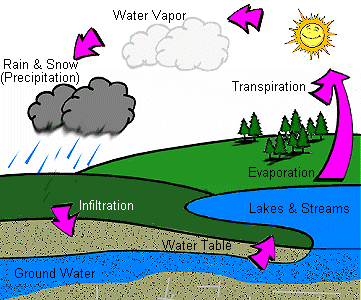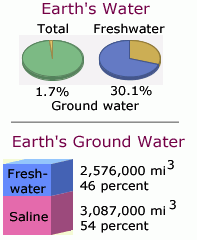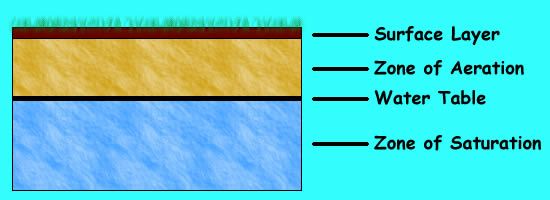EXPLORE: Earth's Water (BrainPop)
Completion requirements
global h2o distibution
5. VIEW: Groundwater (BrainPop)

Groundwater is recharged by precipitation falling and infiltrating the soil. Photo courtesy of the Department of Natural Resources.
Groundwater is water stored underground, in the pore spaces of rocks and soil. While groundwater does not make up a large percentage of the Earth's total water, it does account for approximately 30% of Earth's freshwater. Not all of earth's groundwater is fresh, but groundwater located beneath land surfaces - where freshwater (which falls as precipitation) seeps into the ground - typically is.

Chart showing that 1.7% of Earth's total and 30% of its freshwater is groundwater, as well how much of Earth's groundwater is saline vs. fresh. USGS.
Where does it come from & why is it important?
Groundwater comes from precipitation seeping through the soil. An aquifer is an underground layer of permeable rock, from which groundwater can be easily extracted using a well. Groundwater is located in the zone of saturation, where all of the available spaces in the rock and soil is filled with water. Above this zone is the zone of aeration, where pore spaces are filled with both water and air; we are unable to pump water from this zone. Between the zones of aeration and saturation lies the water table, the top surface layer of groundwater.

Diagram showing relative locations of zones underground. Image courtesy of Michigan Technological University.
Groundwater is an important reservoir because many people rely on water collected from aquifers. For example, the Ogallala aquifer, which underlies the Midwestern part of the United States, provides the majority of the region's drinking water and is an important source of water for irrigating crops.